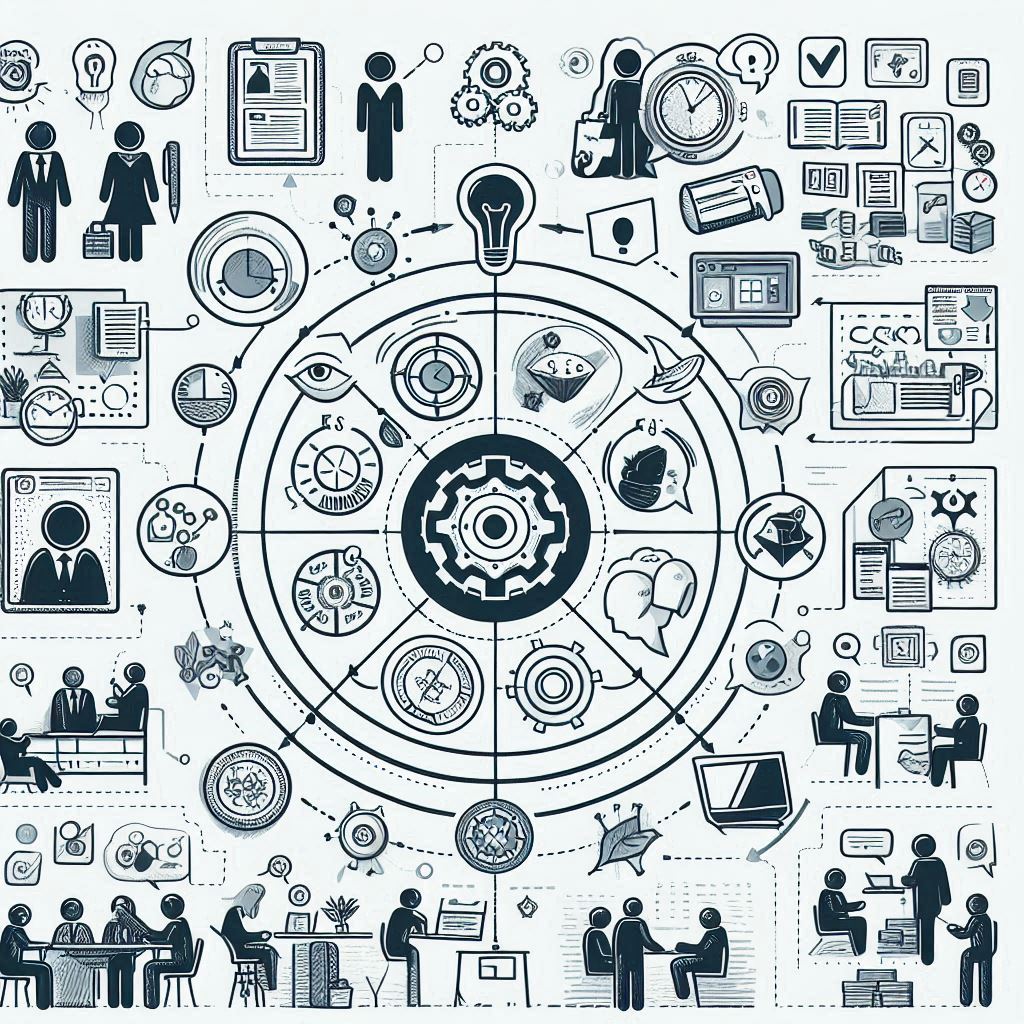In today’s competitive business landscape, understanding your customers is more crucial than ever. A customer-centric strategy ensures that your business decisions are aligned with the needs and desires of your customers. One powerful tool to achieve this understanding is an empathy map. In this blog post, we will explore what an empathy map is, how to create one and provide a detailed empathy map example to help you develop a customer-centric strategy.
What is an Empathy Map?
An empathy map is a visual tool used to gain deeper insight into your customers. It helps you understand their thoughts, feelings, behaviours, and motivations. By capturing these insights, you can create more effective strategies, products, and services that truly resonate with your target audience.
Components of an Empathy Map
An empathy map is typically divided into six sections:
- Think and Feel: What does the customer think and feel? What are their major worries and aspirations?
- Hear: What do they hear from friends, family, and other sources of influence?
- See: What do they see in their environment? What do they see others doing?
- Say and Do: What do they say and do in public? How do they behave towards others?
- Pains: What are their frustrations and challenges? What obstacles do they face?
- Gains: What do they want to achieve? What are their goals and desires?
How to Create an Empathy Map
Creating an empathy map involves gathering data about your customers through various methods such as surveys, interviews, and observations. Here’s a step-by-step guide to creating an empathy map:
- Define Your Objective: Determine what you want to achieve with the empathy map. Are you looking to improve a product, develop a new marketing strategy, or understand a specific customer segment?
- Gather Data: Collect qualitative data from your customers. Conduct interviews, send out surveys, and observe customer behavior.
- Assemble a Team: Bring together a diverse team of stakeholders to contribute different perspectives.
- Create the Map: Draw the empathy map template on a large board or use a digital tool. Divide it into the six sections mentioned above.
- Populate the Map: Fill in each section with insights from your data. Use direct quotes from customers and observations to make the map as detailed as possible.
- Analyze and Interpret: Discuss the findings with your team. Identify patterns and insights that can inform your customer-centric strategy.
Empathy Map Example: Developing a Customer-Centric Strategy for a Fitness App
Let’s walk through a detailed empathy map example for a fictional fitness app called “FitLife.”
Objective
FitLife wants to enhance user engagement and retention by understanding the needs and motivations of its users.
Data Collection
FitLife conducted user interviews, sent out surveys, and monitored user behaviour on the app.
Assembling the Team
The team included product managers, UX designers, marketers, and customer support representatives.
Creating the Empathy Map
Think and Feel
- Users are motivated to improve their health and fitness.
- They feel overwhelmed by conflicting fitness advice.
- They worry about not seeing progress despite their efforts.
Hear
- Users hear fitness tips and success stories from friends and social media influencers.
- They hear about the latest fitness trends and workouts from various online communities.
See
- Users see others in their social circle achieving fitness goals and sharing their progress on social media.
- They see advertisements for fitness programs and products.
Say and Do
- Users frequently talk about their fitness routines and goals with friends and family.
- They regularly log their workouts and track their progress using the app.
- They share their achievements and challenges on social media.
Pains
- Users are frustrated with the lack of personalized workout plans.
- They struggle with staying motivated over time.
- They face challenges in maintaining a balanced diet and finding time to work out.
Gains
- Users want to achieve specific fitness goals, such as losing weight or building muscle.
- They desire personalized guidance and support to stay on track.
- They aim to feel more confident and improve their overall well-being.
Analyzing and Interpreting the Empathy Map
By analyzing the empathy map, FitLife identified several key insights:
- Need for Personalization: Users are seeking personalized workout plans that cater to their individual goals and fitness levels.
- Motivation and Support: Users need continuous motivation and support to stay engaged. Features like progress tracking, reminders, and motivational messages can help.
- Community and Social Sharing: Users value community support and the ability to share their progress. Integrating social features and community challenges can enhance engagement.
Developing a Customer-Centric Strategy
Based on the insights from the empathy map, FitLife developed a customer-centric strategy with the following elements:
- Personalized Workout Plans: FitLife introduced AI-driven personalized workout plans tailored to each user’s
fitness goals, preferences, and current fitness levels. The app now asks users detailed questions about their goals and fitness background to generate custom plans.
- Enhanced Motivation Features: To keep users motivated, FitLife implemented daily reminders, motivational quotes, and milestone celebrations. Users receive notifications that encourage them to stick to their workout routine and recognize their progress.
- Community Integration: FitLife created a social feature where users can join fitness challenges, share their achievements, and support each other. This fosters a sense of community and provides users with the social support they need to stay motivated.
- Expert Advice and Content: FitLife partnered with fitness influencers and experts to provide users with reliable advice and content. This includes articles, videos, and live Q&A sessions to help users navigate their fitness journeys with confidence.
- User Feedback Loop: FitLife established a feedback loop where users can easily share their experiences and suggestions. This ongoing dialogue ensures that the app continues to evolve based on user needs and preferences.
Conclusion
Creating a customer-centric strategy requires a deep understanding of your customers’ thoughts, feelings, behaviours, and motivations. An empathy map is an invaluable tool that helps you achieve this understanding by providing a structured way to capture and analyze customer insights.
In our example with FitLife, the empathy map revealed key areas for improvement and innovation. By focusing on personalization, motivation, community, expert advice, and continuous feedback, FitLife was able to develop a strategy that truly resonated with its users, enhancing engagement and retention.
If you’re looking to create a customer-centric strategy for your business, start with an empathy map. Gather data, involve a diverse team, and use the insights to guide your decisions. By putting your customers at the centre of your strategy, you can build products and services that meet their needs and exceed their expectations, driving long-term success for your business.
Remember, understanding your customers is not a one-time task but an ongoing process. Continuously updating your empathy map with new insights will ensure that your strategy remains relevant and effective in a constantly changing market.
















